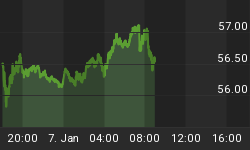Gold
Gold finished trading in New York yesterday at $833.30, up $23 and silver was up 73 cents to $13.76. Gold and silver remained firm in Asian trading and have given up some of the gains in early European trading. Gold is trading at $831.30/831.70 per ounce (1100 GMT).
Gold surged yesterday on concerns regarding Russia - NATO tensions, surging oil and commodity prices and confirmation that the US Mint is suspending sales of American Eagle gold bullion coins (1 ozt) due to an inability to meet surging demand (see News and Commentary). Gold was significantly oversold and this was as expected given the myriad of strong fundamental macroeconomic and geopolitical factors favouring gold at the moment. These strong fundamentals could see gold have its strongest weekly gain in 7 years.

The shortage in the physical bullion markets is perhaps the most important story facing the precious metals markets today. Bullion retailers, wholesalers, bullion banks (such as UBS yesterday) refiners and mints (US and Canadian) have been experiencing difficulty in supplying their respective customers due to an unprecedented level of demand. The fact that for the first time since its inception, the US Mint, part of the Treasury Department, halted the sale of gold bullion coins last Friday is highly important and was reported on by the Wall Street Journal, Bloomberg, Bloomberg TV, the Financial Times, Reuters and regionals such as the LA Times.
Buyers of bullion coins and bars are long term buyers and diversifiers most of whom buy bullion as financial insurance against macroeconomic and systemic risk. Very few will be selling their bullion until the current global economic crisis has abated in a number of years time and when gold is likely above its inflation adjusted record high of over $2,300 per ounce.
Gold and particularly silver are tiny markets in terms of global stock, currency and bond markets, and if even a fraction of the big money internationally picks up on this story and decides to take positions in the precious metal markets (which seems very likely) we will see a surge in prices that will make the 1970s look very tame.
Also of importance is the news that the Bundesbank has reaffirmed its belief in the importance of retaining significant holdings of gold bullion in their monetary reserves.
The Bundesbank has said that gold reserves are more important than before and has rejected calls that it should sell some of its gold reserves to help boost the slowing German economy. The Bundesbank said that financial and political uncertainty make the reserves even more important than before. The Bundesbank is the world's second-largest holder of gold after the US Federal Reserve, and has sold just 20 tonnes out of total reserves of over 3,000 tonnes in the past five years.
"Gold sales are not a suitable way to sustainably consolidate the public accounts," the Bundesbank said after a query about trade union proposals that it sell gold to fund some of a 25 billion euro ($37 billion) economic stimulus package. "National gold reserves have a confidence and stability-building function for the single currency in a monetary union. This function has become even more important given the geopolitical situation and the risks present in financial market developments."
Today's Data and Influences
Focus will remain on the dollar, oil and gold markets ahead of the key note speech from the Fed's Bernanke later today. He is due to speak on the topic of financial stability. He is not expected to provide any fresh insights on the policy front. There are no US data due for release today so movements in oil and stocks are likely to influence direction.
















